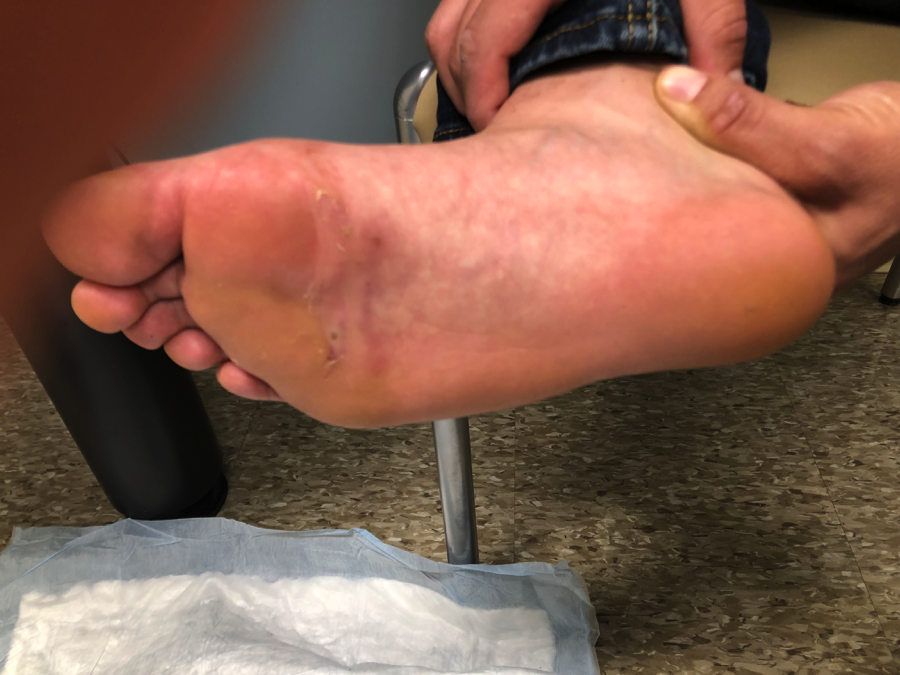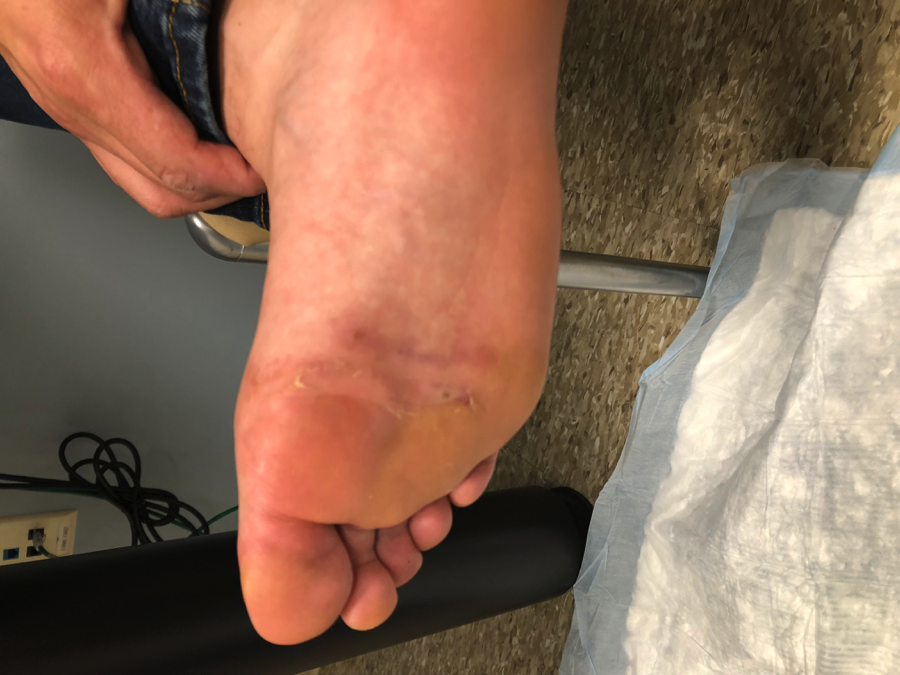Case Presentation: A 33-year-old male with history of knee surgery, presented with migrating rash on the right foot after returning from Nigeria. He described the rash moving from the dorsal to the plantar aspect of the foot. He was deployed to Nigeria for 6 months as military personnel. He denied insect bites, consuming raw meat, or raw vegetables. He used to drink bottled water only. He used to play basketball on the beach barefoot for 3 months. After his return to the USA, he noted erythema and itchy rash on the dorsal fourth and fifth toes, which gradually migrated laterally and subsequently to the planter aspect of the foot. It was associated with discomfort, pain, swelling and intense itchiness. He denied fever, chills, cough, dyspnea, hemoptysis, weight loss, or diarrhea. He was seen by a dermatologist and had liquid nitrogen treatments to the area without improvement. On examination, the planter aspect of right foot showed horizontal scar on the distal part at the site of previous topical treatment, with adjacent palpable threadlike raised rash, with minimal swelling (image 1, 2). Laboratory work showed leukocytes of 6.1×10(3)/mcL, eosinophils of 0.2X10(3)/mcL, platelets of 220×10(3)/mcL, with normal hepatic enzymes and renal function. He was suspected to have cutaneous larva migrans without systemic involvement. He was treated with single dose of ivermectin with remarkable improvement.
Discussion: Cutaneous larva migrans is a parasitic skin infection caused by hookworm larvae that usually infests cats, dogs and other animals. Humans can be infected with the larvae by walking barefoot on sandy beaches or contacting moist soft soil that has been contaminated with animal feces. Most cases are reported in travelers to the Caribbean, Africa, Asia, and South America. Beaches (and sandboxes), where domestic animals may roam are a common source of infection. Hookworm burrows along a haphazard tract, leaving a winding, threadlike, raised, reddish brown rash. The rash itches intensely. Our patient had relevant travel history to a tropical area, and developed typical rash after walking barefoot on the beach, which led to such diagnosis.
Conclusions: Diagnosis of cutaneous larva migrans should be suspected in returning travelers from tropical areas with typical appearance and location of the rash along with the person’s history of recent contact with soil or sand.


